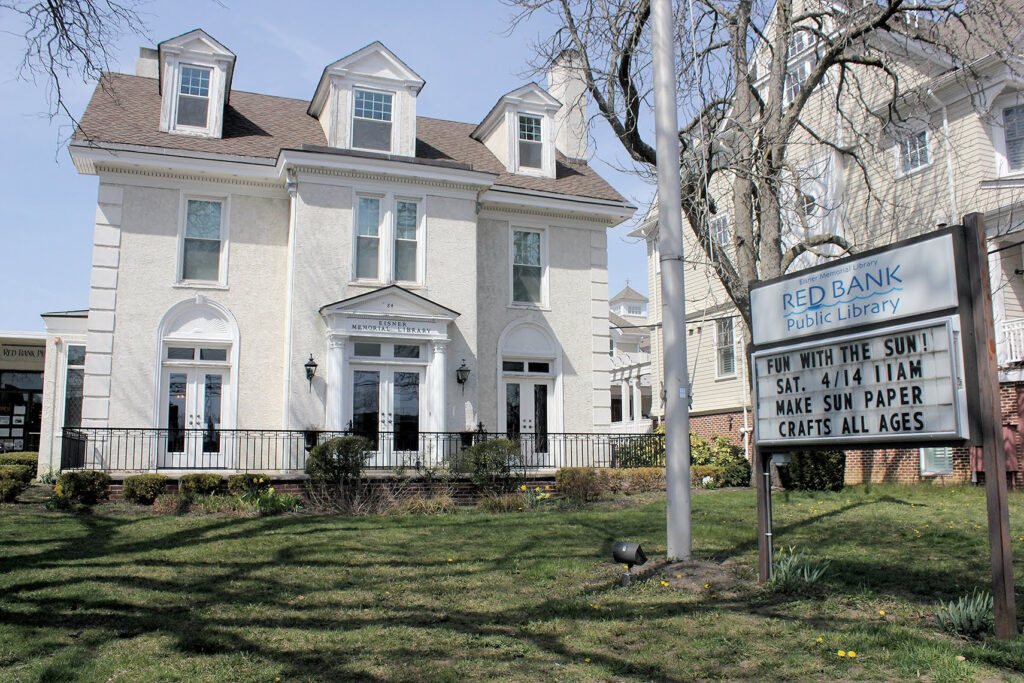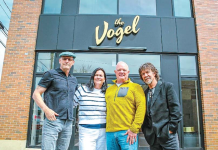By Allison Perrine

RED BANK – What causes anti-Semitism?
That answer has been different throughout history, according to Rabbi Leslie Bergson, one of the three lead panelists who discussed the causes and manifestations of anti-Semitism during the Red Bank Public Library’s latest installment of its Let’s Talk About Race program.
But to put it simply, it is “hatred for the sake of hatred,” said Rabbi Marc Kline, one of the guest speakers that night.
“It’s ignorance and fear at its highest and it plays out in horrific ways,” said Kline. “There’s racism, but it’s not about race, so we’re really in no-man’s-land being set aside in all sorts of ways.”
During last Wednesday’s virtual event, attendees heard from Bergson, a board-certified professional chaplain; Kline, who serves at Monmouth Reform Temple; and Linda Hewitt, circulation super visor and outreach and programming coordinator with the library; who tried to identify the history and present-day manifestations of anti-Semitism: a perception of Jewish people which may be expressed as hatred.
According to Bergson, the term “anti-Semitism” was not used until the end of the 19th century but anti-Jewish feelings have been around “a whole lot longer, since ancient civilizations.” Citing the Anti-Defamation League, Bergson said anti-Semitism typically surges during times of political or economic uncertainty and rapid social change, often used as a tool of anger or political manipulation. And she said to her, that sounds “pretty much like the state of things today.”
“The statelessness, religious dif ferences and the economic success of Jews have caused a lot of hatred,” said Bergson, like in Ancient Egypt when Egyptians recast the exodus – the departure of Israelites from Egypt – not as Jews seeking freedom but as “the expelling of outcasts,” she said. Later, in Greek and Roman literature, writings were published calling Jewish dietary laws and circumcisions “bizarre customs” and the celebration of the Sabbath as “laziness” rather than a day of rest. In early Christian times, Jewish people were blamed for the crucifixion of Jesus; throughout the Mid- dle Ages there were “forced conversions, massacres and expulsion,” she added.
And while those extremi- ties may not be occurring in the U.S. today, anti-Semitism still arises. Kline said that when his daughter was in fourth grade, for example, she came home from school claiming that she must not be Jewish; when he asked her why, she said, “Well I don’t have horns and a tail and they told me at school that if I was Jewish, I would have horns and a tail.
“Here’s a 9-year-old person, young lady, talking with 9-year-olds who understand Jews as having horns and tails,” said Kline. “This is what kids have learned from their parents and this is how stereotypes perpetuate… it’s hatred for the sake of hatred.”
Hewitt shared similar experiences, including a memory of her oldest son who, at the age of 6, called his home- town of West Long Branch “Jewville.”
“I stopped the car… I explained to him that I actually was partly Jewish and that he was partly Jewish, and this just horrified him,” said Hewitt. “He actually dismissed the whole idea.”
Hewitt’s father was Jewish and her mother was an Anglo-Saxon Protestant. The two married but her mother said their wedding day was “one of the saddest days of her life” because many family members on her husband’s side did not attend nor did they acknowledge that Linda was born.
“Even though I was half Jewish, I think I was anti-Semitic, to tell you the truth, when I was growing up because my dad’s family had hurt my mom’s family,” she reflected. “I kept seeing that religion could divide people. You have people like Rabbi Kline, who does so many amazing things for his community, but some religious leaders actually divide that community. So I started to realize that not all religious leaders were alike and how they could bring a community together.”
“It wasn’t until my teenage years that I actually changed,” she said.
NAACP Greater Red Bank Area president Kerwin Webb, who moderated the program that night, presented information sent by a representative of the Jewish Federation. It stated that according to the FBI’s 2019 Hate Crime report, of the religious bias hate crimes that year, 60.2 percent were victims of anti-Jewish motivated crimes. And in 2020, anti-Semitic incidents in New Jersey alone were the second-highest nationwide, with 295 anti-Semitic incidents documented in the state last year.
“They’re seemingly everybody’s punching bag except the Black person,” said Webb.
Kline noted that while the night’s presentation centered around anti-Semitism, there’s also Islamophobia, racism and anti-LBGTQ attitudes in the world today. “There’s a lot of oppression happening right now and I would argue that the conversation in this country is only further dividing us,” he said. “We have to remember that we’re human beings first and that there’s no one piece of our label that defines us, and yet we pigeonhole people based on our fear or ignorance of what that label may mean.”
This article originally appeared in the Aug. 5-11, 2021 print edition of The Two River Times.














